The Best Types of Knives To Have For Your Home Kitchen
Whenever you're in the kitchen and preparing food, what's the number one item you always reach for? A knife, the hardest working item in your kitchen. One of the most frequently asked questions I get as a private chef, cooking for my clients in their homes is "what kind of knives do you use?"
I had originally published this article back in 2021, and still to this day, my reccomendations still haven't changed a bit!
Disclosure:
I have not received payment from any third party, manufacturer, or distributor for this article. The views and opinions of the products contained in this post are purely my own based upon my professional opinion and experience in ownership and use of these actual products.
- Disclosure:
- Chef's Knife: The Most Used Knife In The Kitchen
- Bread Knife: No More Squished Bread
- The Paring Knife: Peeling Precision & Ease of Use
- Boning Knife: Make No Bones About It! You Must Have One!
- Utility Knife: Versatility, Utility, and Comfort
- Why Buy Mercer Culinary Knives? Why The Genesis Series?
- Key Features of Mercer Genesis Knives:
- When selecting a knife, the type of steel matters!
- Why Forged Blades vs. Stamped Blades?
- Mercer Genesis Santoprene Grip: Safety and Comfort
- How Should I Buy My Home Kitchen Knives?
- How Often Should I Sharpen My Kitchen Knives?
- How to hone a knife:
- How do I care for my kitchen knives?
- Conclusion:
- Check out other great recipes, and tips and tricks for Easy, Effortless Entertaining from AWG Private Chefs
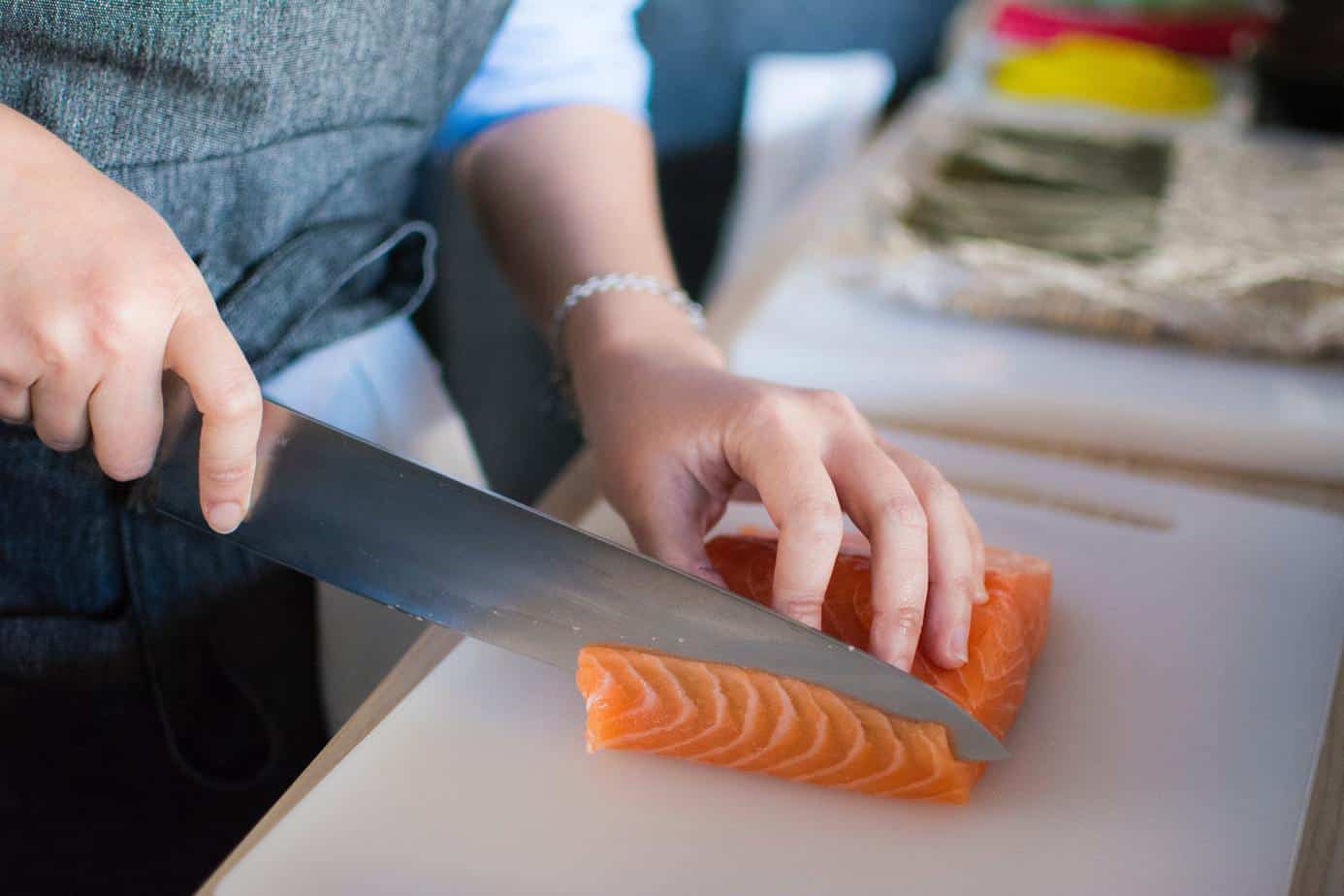
You don't need a huge set of 10 or 15 knives to accomplish most home kitchen tasks!
No matter if you are a Certified Master Chef or an avid or beginner home cook, having the right knife to do the selected task at hand makes all of the difference in the world in getting the cutting job at hand done right, safely, reducing fatigue, and the potential for repetitive stress injuries.
Many people will select a block set of knives that has 8 or 10 different sizes and types of knives in it. Some of these knife sets can cost several hundred dollars upwards to over a thousand. Do you really need 3 different sizes of the same style of blade?
Believe it or not, the answer is a resounding no!
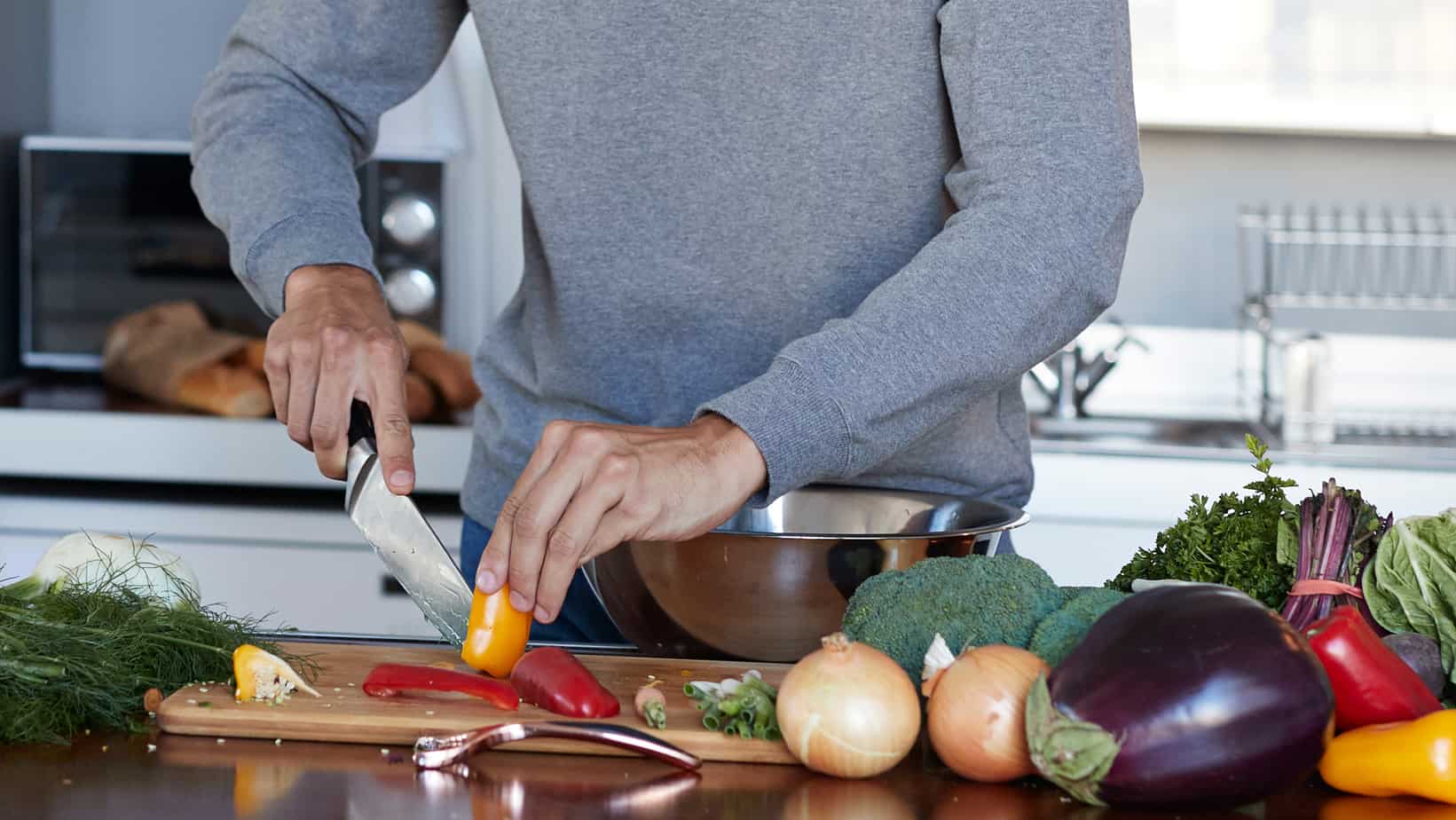
Chef's Knife: The Most Used Knife In The Kitchen
The number one knife you will use in your home kitchen for daily chopping, slicing, and dicing meal prep is the Chef's Knife. Chef's knives are primarily used for cutting meat, dicing vegetables, chopping herbs, etc. A chef's knife comes in a variety of inch lengths, the most common sizes are 6, 8, 9, and 10-inch blades.
For most home cooks, I recommend using the Genesis series 8 inch chef's knife made by Mercer Culinary. If you have larger hands or routinely do a large volume of cutting, then a 9 inch or 10 inch blade could be more appropriate for your needs. The larger the blade size, the heavier the weight of the knife which more cutting can be accomplished per slicing motion, resulting in getting your work done faster, and with fewer repetitive strokes which can result in fatigue, letting the knife do the work for you.
As a professional chef, I use a 10 inch blade because I do large-volume chopping and have big hands, whereas my sous chef, who also does large volume, but has smaller hands, prefers a 9-inch blade. A 6 inch chef's knife is perfect for kids or smaller hands just starting out in the kitchen to use, as the knife isn't too heavy or too large.
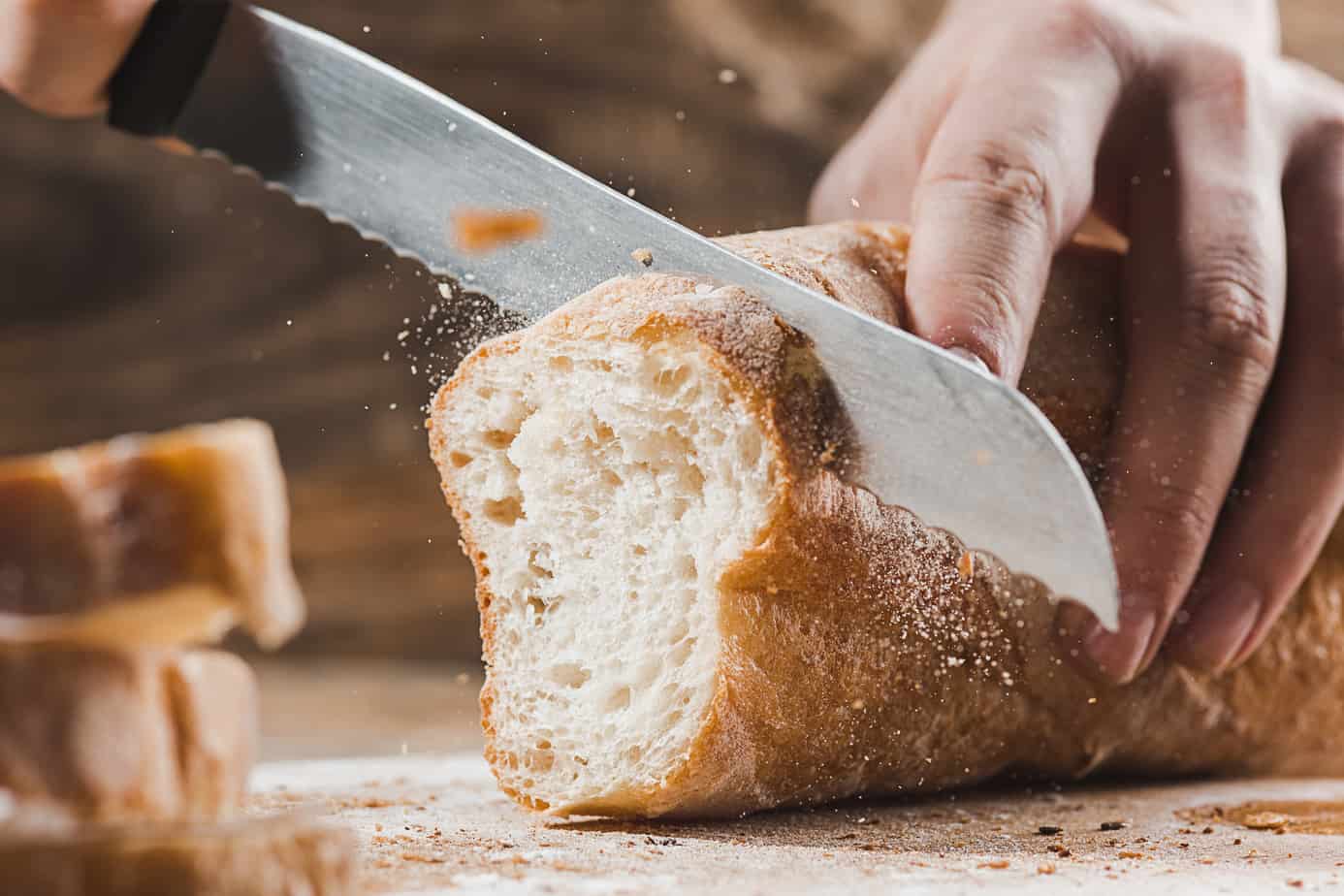
Bread Knife: No More Squished Bread
The second knife you should have is a serrated bread knife. How many times have you grabbed a random knife out of your drawer or block and tried to slice in to a fresh loaf of bread only to have it end up a squished and mangled mess?
Bread knives take the risk out of squishing your fresh bread or turning crusty bread like baguettes, sourdough boules, or your morning bagel into a huge pile of breadcrumbs instead of clean slices.
The Mercer Culinary Genesis 8" Wavy Edge bread knife makes short work of slicing through bread without leaving a path of destruction or a huge mess of crumbs behind.

The Paring Knife: Peeling Precision & Ease of Use
The third knife you should have in your home kitchen is a 3.5" paring knife. A paring knife is primarily used for peeling vegetables, fruits, and garlic. They are great for lower volume, higher precision cutting tasks where a large blade would be either too difficult to manipulate or its weight could potentially damage fine or soft ingredients.
The 3.5 Inch Mercer Genesis Paring Knife makes quick work out of peeling the skin from an apple, peach, or tomato. Small or micro-fine cuts, garnishing, peeling, and slicing a shallot, or making clean slices into pie dough for venting are all common uses for a paring knife.
Paring knives are also great for younger kids to begin to use a knife when you may feel that even a 6-inch chef's knife might be a little too big for smaller or unskilled hands.
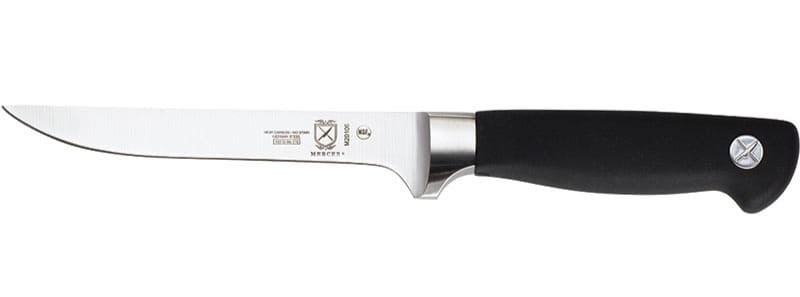
Boning Knife: Make No Bones About It! You Must Have One!
The fourth knife you need to have is a boning knife. Boning knives have very sharp tips to make piercing meat and skin much safer and easier. Boning knives are primarily designed for disjointing, and cutting through tendons, ligaments, and other connective tissue when removing meat from the bone. Boning knives can be used not just for meat, but also for fish and poultry as well.
There are two styles of boning knife, the Mercer Genesis 6 inch stiff blade boning knife, or the 6 inch flexible blade boning knife. The main difference between the two knives is the flexibility or give in the blade. Both feature the same safety and comfort of the slip resistant Santoprene handle.

Utility Knife: Versatility, Utility, and Comfort
The final knife you should have in your home kitchen is the Utility Knife. Utility knives combine the precision cutting of a paring knife, with the ability to do larger jobs like a chef's knife.
The 5 inch Mercer Genesis Utility Knife is great for slicing larger fruits, vegetables, potatoes, tomatoes, and cheese. They have longer blades than a paring knife which allows you to cut more ingredients in less time, again reducing fatigue and the chance of repetitive stress injuries.
Why Buy Mercer Culinary Knives? Why The Genesis Series?
We all know there are plenty of knife manufacturers on the market today, and it seems like there are new brands popping up literally every week claiming that they are the best and the brightest. Blah blah blah.
Mercer Culinary has been primarily a "chef's only" or culinary industry knife company for many years. They manufacture a wide array of knives at all different price points from extremely inexpensive to luxury high-end Japanese and German style blade types. Mercer Culinary isn't about flashy marketing infomercials on TV, but rather focused on producing affordable, high-quality, durable and long lasting knives, cutlery, and kitchen accessories for both professional chefs and home cooks alike.
Key Features of Mercer Genesis Knives:
- Crafted from high-quality steel seen in much more expensive brands
- Incredible durability due to the X50 Cr Mo V15 German Steel
- Forged blades for increased comfort and balance
- The added comfort of the Santoprene grip handle
- Lifetime warranty against manufacturer's defects
When selecting a knife, the type of steel matters!
Knives from Mercer Culinary are made from heat-treated X50 Cr Mo V15 steel. One of the finer grades of stainless steel around. This steel is often found in much more expensive culinary competition-grade knives. The X50 Cr Mo V15 steel is soft enough to resist breakage or failure when under stress or accidental impact like dropping the knife. The steel remains strong enough to keep its shape while being hard enough to hold a sharp edge.
I've found that even with large-scale daily use in a professional kitchen, my Mercer Genesis knives require just an occasional quick honing to bring back a razor-sharp edge. I still absolutely recommend having your knives professionally sharpened at least once or twice a year depending on use. If you are a professional chef or home cook who is very high use of your knives.. Quarterly sharpening is reccomended.
Why Forged Blades vs. Stamped Blades?
"Forged blades" are a term that refers to the thickness of the blade. Mercer knives often feature a bolster at the back of the blade for added thickness, increased balance, durability, and comfort. That little bit of extra thickness at the handle end of the knife makes a difference in the length between needing to be sharpened.
Stamped blades are a uniform thickness from beginning to end of the blade, and are often found in cheaper, lower quality knives. Stamped knife blades are often more flexible, made out of cheaper quality steel, and have lower durability.
Mercer Genesis Santoprene Grip: Safety and Comfort
Probably the most comfortable knife I've ever held! The Mercer Genesis knives feature something called Santoprene grips. The only way I can describe these handles is that they are semi-rubberized, grippy, and so amazingly comfortable in your hands.
After 25 years in the food service industry, my hands have gotten pretty beat up. The Santoprene grips give you a cushion when the blade impacts the cutting board. The added "grippiness" of the Santoprene handle is great when you have wet or slippery hands when working with raw meats, high moisture vegetables, or other ingredients giving you that extra little bit of non-slip safety assurance.
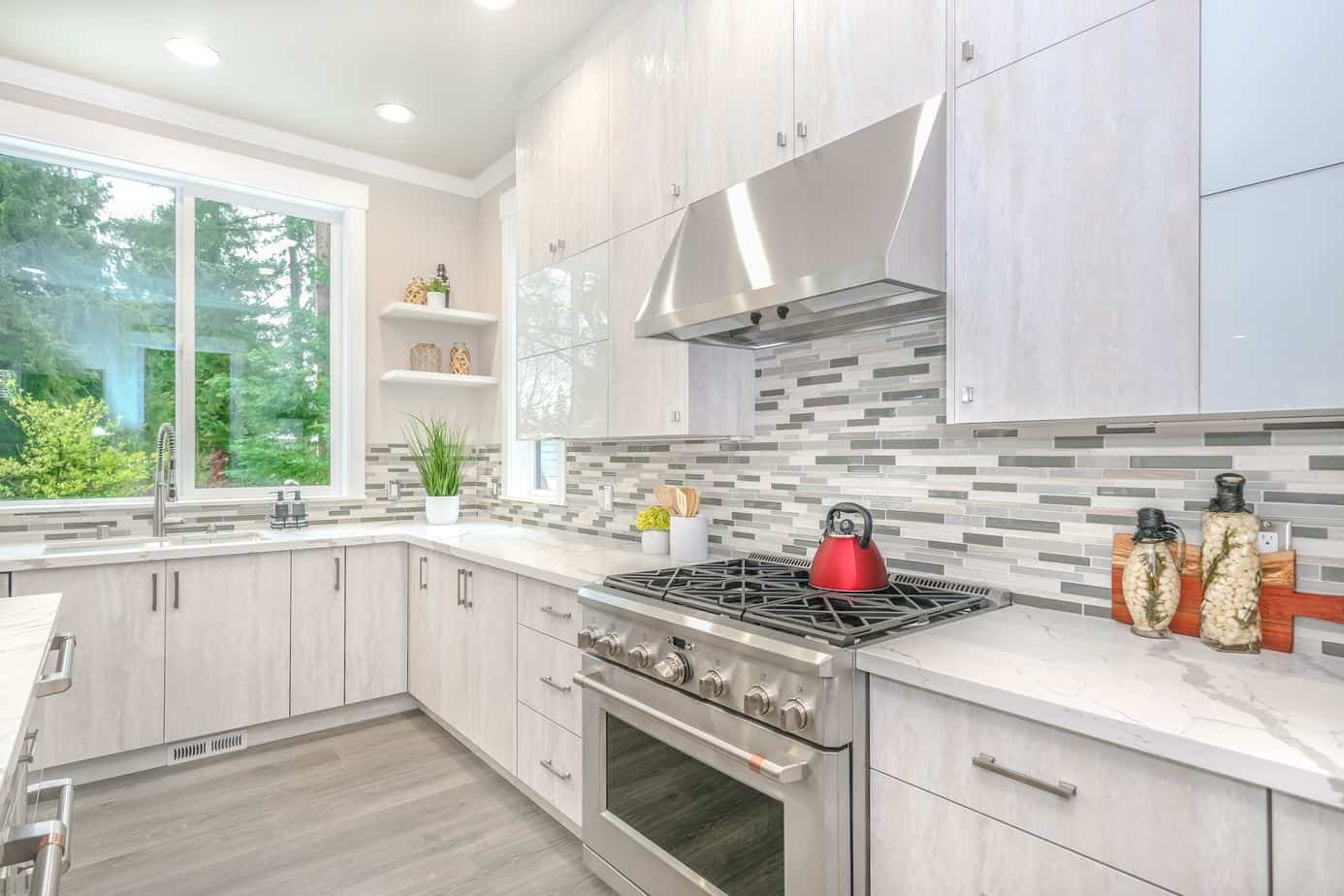
How Should I Buy My Home Kitchen Knives?
I prefer to always purchase my knives in an open stock format. Open stock means that you can buy individual pieces to create the perfect set that works best for you. Some people may have a preference for having more than one of a particular knife, or perhaps an additional blade size or style.
Block sets are a manufacturer pre-determined set of knives that they think you will use most often. Some people are very accustomed to only buying knives. If you are someone that likes having a block set, Mercer Culinary created the Genesis 5 Knife Block Set that's perfect for you, and contains exactly the knives I suggested above, with a really beautiful glass storage block. This set is the actual set I have in my home kitchen as well, and the same knives I use at work all day long.
How Often Should I Sharpen My Kitchen Knives?
First, let's differentiate between honing and sharpening.
With use over time, the micro-fine edge of your knife will begin to roll over and get out of perfect alignment, this is totally normal. When this happens, the knife begins to become what some tend to think of as dull. This then results in you having to push harder to get through the product which you are cutting. Always remember that a dull knife is a dangerous knife!
The process of honing a knife uses a rod called a honing steel to push and realign the micro-fine edge back to the center. Honing the knife does not actually remove metal to realign the micro-fine cutting edge. You should hone your knives every 2-3 uses, or whenever you feel that the knife edge isn't performing perfectly.
How to hone a knife:
When you sharpen a knife, metal from the blade is actually shaved, ground, or removed to produce a new sharp edge. Annual or semi-annual professional sharpening will return the knife to brand new or better than brand new status.
How do I care for my kitchen knives?
- Never put any knife in the dishwasher. Like seriously, never ever. Don't even think about it.
- High dishwasher temperatures and caustic dishwasher soaps can hurt your knives and cause them to prematurely fail, lose their sharpness, and will void most manufacturer's warranties.
- Always hand wash your knives in hot water, with a mild dishwashing liquid soap. Rinse the knife well, and immediaely dry completely with a soft cloth.
- Prolonged soaking or submersion in water. This can cause premature failure of the knife blade or handle.
- The use of chlorine bleach or other types of bleach products can lead to staining and pitting of the knife blade.
- Avoid soaking your knives in aluminum pans or stainless steel sinks. Due to the galvanic reaction, this can lead to the pitting of the blade.
- Always wash off any residue from your knife right away. Prolonged exposure can cause discoloration, staining, or pitting.
- Have your knives sharpened by trained cutlery sharpening professional, at least once or twice a year.
- When not in use, store your knives either in a hard plastic knife blade guard set or in a block to protect your blades from damage.
Conclusion:
Great quality knives don't have to be flashy or expensive. You don't need a huge collection of knives. Having the 5 styles of knife I've mentioned above will allow you to accomplish most cutting or slicing tasks in your home kitchen. Look to the Mercer Genesis series of knives for great affordability, durability, and comfort. They are my daily drivers both at work and at home and I believe they will be a great set for you as well.
Check out other great recipes, and tips and tricks for Easy, Effortless Entertaining from AWG Private Chefs
- The Most Addicting Grilled Pineapple Recipe
- How to Make Perfect Potatoes Every Time
- How to Clean & Polish Stainless Steel Cookware
- Bizarrely Delicious Food and Champagne Pairings
About the Author: Certified Master Chef, Sommelier & Wine Educator, Sean Andrade is the Executive Chef Owner of AWG Private Chefs headquartered in Northern California. Voted best personal chefs and best caterers in San Francisco, and #1 Private Chef company in California. Chef Sean has worked in the restaurant and hospitality industries worldwide for more than 25 years. AWG Private Chefs offers highly custom-tailored, bespoke private chef dining experiences, personal chef service, and private event catering in over 30 countries around the globe.